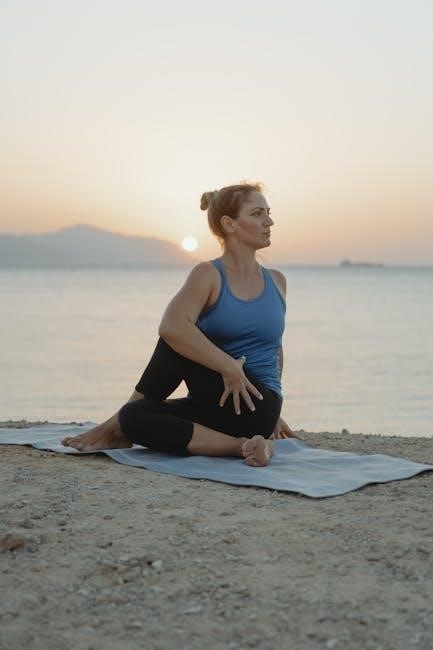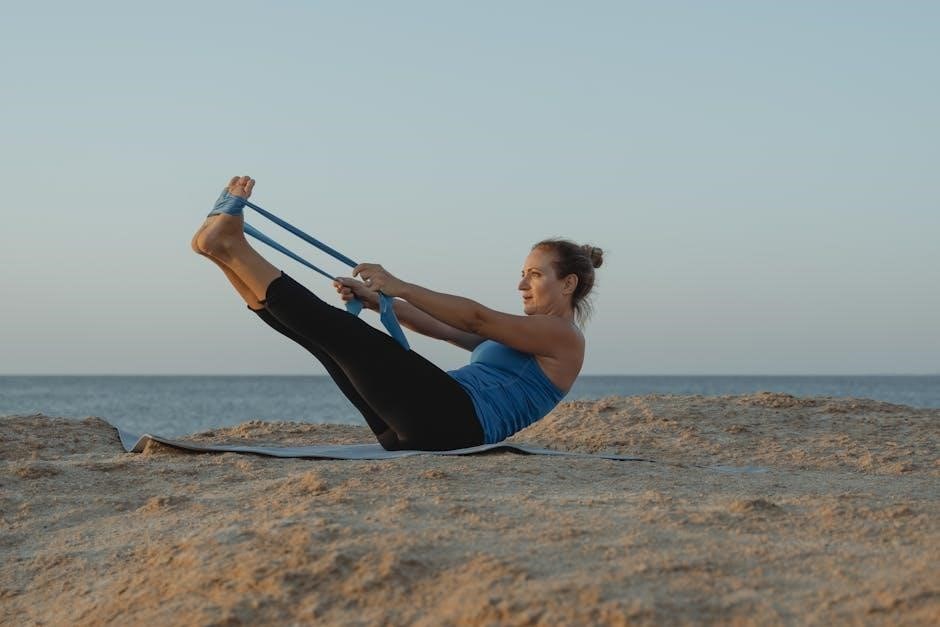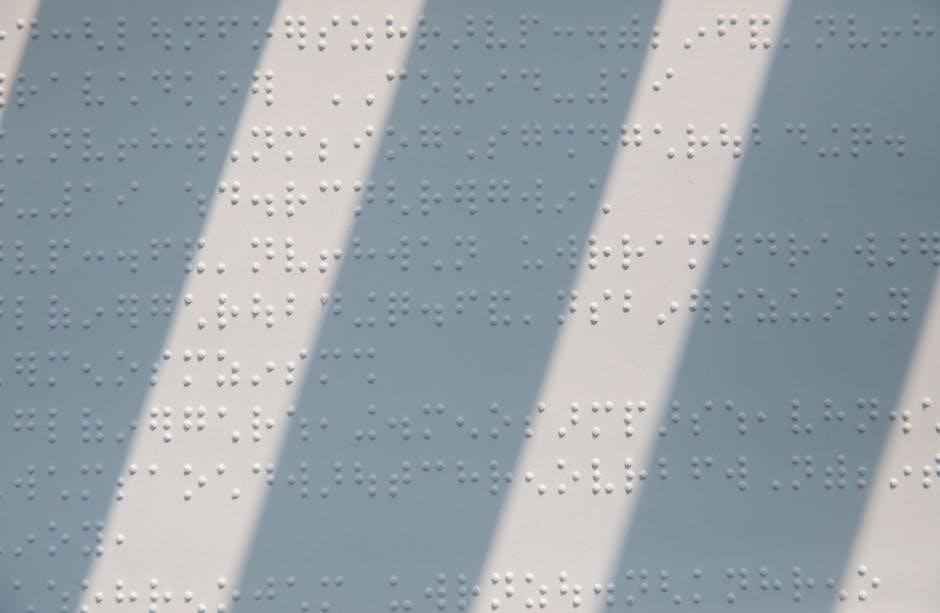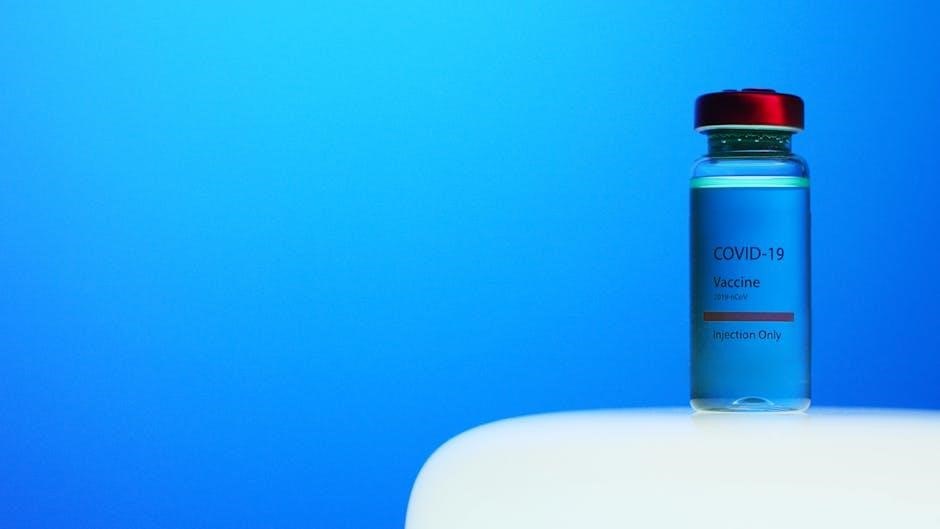Diastasis recti is a separation of the abdominal muscles along the linea alba, often occurring during pregnancy. It can cause a visible abdominal gap and core instability.
1.1 What is Diastasis Recti?
Diastasis recti is a medical condition characterized by the separation of the abdominal muscle (rectus abdominis) along the linea alba, the connective tissue that runs down the midline of the abdomen. This gap can lead to a visible bulge or “pooch” and may cause core instability. It commonly occurs during pregnancy due to increased abdominal pressure but can also result from heavy lifting, obesity, or repetitive straining. The severity varies, and while some cases improve on their own, others may require targeted exercises or interventions to address the separation and restore core strength.
1.2 Causes and Risk Factors
Diastasis recti occurs due to increased abdominal pressure weakening the linea alba, the connective tissue separating the abdominal muscles. Common causes include pregnancy, multiple pregnancies, C-sections, and weak core muscles. Risk factors such as heavy lifting, obesity, and aging can exacerbate the condition. Early pregnancy (around 14 weeks) and postpartum periods are critical times for development. Strengthening the core before and during pregnancy can reduce the likelihood of severe separation. Understanding these factors is key to prevention and effective management of diastasis recti.

Self-Assessment and Diagnosis
Self-assessment involves checking for a visible gap between abdominal muscles or a bulge during coughing. Professional diagnosis may include physical exams or imaging for accurate evaluation.
2.1 How to Check for Diastasis Recti at Home
To check for diastasis recti at home, lie on your back with knees bent and feet flat. Engage your core by drawing your belly button toward your spine. Place your fingers on your abdomen, just above the belly button, and press gently. Feel for a soft gap or separation between the abdominal muscles. You may also notice a bulge when coughing or sitting up. Repeat this in different positions, such as on hands and knees, to assess the separation fully.
2.2 Understanding the Severity of the Condition
The severity of diastasis recti is determined by the width of the abdominal separation, typically measured in finger widths. Mild cases (1-2 fingers) may not cause significant symptoms, while moderate (2-3 fingers) or severe (more than 3 fingers) cases can lead to noticeable bulging, back pain, and core instability. Symptoms like a visible abdominal gap or difficulty engaging core muscles indicate the need for professional evaluation. Understanding the severity helps guide appropriate treatment, whether through conservative exercises or surgical intervention, to restore core function and improve quality of life.

Treatment Options for Diastasis Recti
Treatment options include conservative approaches like tailored exercises, abdominal supports, and lifestyle changes, or surgical repair for severe cases; These methods aim to restore core strength and stability.
3.1 Conservative Approaches
Conservative approaches focus on non-invasive methods to address diastasis recti, often combining targeted exercises, breathing techniques, and postural awareness. Core-strengthening exercises, such as transversus abdominis contractions and pelvic tilts, are foundational. These exercises help stabilize the abdominal wall and improve core function. Additionally, wearing abdominal support garments, like a postpartum wrap or Tubigrip, can provide stability and aid in muscle activation. Breathing exercises, including diaphragmatic breathing, are also essential for engaging the deep core muscles. Lifestyle modifications, such as avoiding heavy lifting and monitoring exercise intensity, further support healing and prevent progression.
3.2 Surgical Repair
Surgical repair is considered for severe cases of diastasis recti where conservative methods fail to improve symptoms. The procedure typically involves tightening the abdominal muscles and repairing the linea alba. It may also address any coexisting hernias. Surgery is usually recommended for individuals with significant abdominal wall weakness, chronic pain, or functional limitations. Recovery requires several weeks of rest and avoidance of strenuous activities. Surgical repair is a last resort and should be discussed with a healthcare provider to determine if it is the appropriate treatment option.

Exercises for Diastasis Recti
Targeted exercises strengthen the transversus abdominis and improve core stability, helping to close the abdominal gap and restore muscle function. They include foundational, intermediate, and advanced routines.
4.1 Foundational Exercises
Foundational exercises focus on strengthening the deep core muscles, particularly the transversus abdominis; Start with gentle movements like belly breathing and pelvic tilts. Lie on your back with knees bent, engage your core by drawing your belly button toward your spine, and hold for 5-10 breaths. Practice these in various positions: sitting, standing, or on hands and knees. Begin with 5-10 repetitions, gradually increasing as strength improves. Avoid any exercise that causes pain or discomfort, and consult a physiotherapist if needed. Consistency is key for progress.
4.2 Intermediate Exercises
Intermediate exercises build on foundational strength, incorporating more dynamic movements. The bird-dog exercise is effective: on hands and knees, extend one arm and the opposite leg, holding briefly. Side planks target oblique muscles, helping stabilize the core. Modified planks, with knees on the ground, strengthen the entire core without overstrain. Marching in place while lying on your back with knees bent engages the lower abs. Perform 3 sets of 10-15 repetitions for each exercise, ensuring proper form to avoid discomfort. Progress gradually to enhance core stability and posture.
4.3 Advanced Exercises
Advanced exercises challenge the core further, enhancing strength and stability. Stability holds on a balance ball, engaging the transversus abdominis, improve posture and control. Single-arm rows in a side plank position strengthen obliques and promote functional movement. Plank variations, like alternating shoulder taps, build endurance and coordination. Pallof presses with a resistance band target rotational strength. Ensure proper form and breathing to avoid strain. Start with 8-12 repetitions and progress as strength improves. These exercises are ideal for those with a solid foundation, aiming to restore advanced core function and athletic performance.

Sample Exercise Routine
A daily routine combining foundational exercises like transversus abdominis contractions, pelvic tilts, and bird-dog exercises can strengthen core muscles and promote healing. Progress gradually for optimal results.
5.1 Transversus Abdominis Contraction
To perform the transversus abdominis contraction, lie on your back with knees bent and feet flat. Engage your core by drawing your belly button toward your spine.
Hold for 5-10 breaths, ensuring no movement in your pelvis or ribcage. Repeat 10-15 times, 3-4 sets daily. This exercise strengthens the deepest abdominal layer.
Start with gentle contractions and gradually increase intensity. Avoid arching your back or holding your breath. For progression, perform the exercise in sitting or standing positions.
Consistency is key to improving core stability and reducing the abdominal gap. If discomfort occurs, stop and consult a physiotherapist for guidance.
5.2 Pelvic Tilt Exercise
Begin by lying on your back with knees bent and feet flat on the floor. Gently tilt your pelvis upward, pressing your lower back into the ground.
Hold for 5 seconds, then release. Repeat 10-15 times for 3 sets daily. This exercise strengthens the muscles of the lower back and pelvis.
Focus on slow, controlled movements to avoid strain. Start with gentle tilts and gradually increase intensity as comfort allows.
The pelvic tilt helps improve posture, reduce discomfort, and stabilize the core, making it an effective exercise for diastasis recti recovery. If pain occurs, stop and consult a physiotherapist.
5.3 Bird-Dog Exercise
Start on your hands and knees with a neutral spine. Extend your right arm forward and left leg backward, keeping them straight. Hold for 5 seconds.
Return to the starting position and repeat on the opposite side. Perform 3 sets of 10 repetitions daily.
Focus on maintaining a straight line from head to heels and engaging your core for stability.
This exercise strengthens the transversus abdominis and improves posture and balance. If pain occurs, modify the movement or consult a physiotherapist.
Lifestyle Modifications for Healing
Adopting good posture, wearing supportive clothing, and avoiding heavy lifting can aid recovery. A balanced diet rich in protein and nutrients supports tissue repair and overall healing.
6.1 Postural Awareness
Maintaining proper posture is essential for healing diastasis recti. Avoid slouching or arching your back, as this can strain the abdominal muscles and worsen the separation. When sitting, ensure your spine is straight, and your shoulders are relaxed; Use a supportive pillow if needed. While standing, keep your weight evenly distributed on both feet and engage your core gently. Lying down, place a pillow under your knees to reduce pressure on your lower back. Good posture reduces muscle strain and promotes core stability, aiding in the recovery process.
6.2 Nutrition and Recovery
Nutrition plays a vital role in healing diastasis recti. Focus on consuming protein-rich foods to repair muscles, zinc for tissue healing, and vitamin C to support collagen production. Include fiber-rich foods to aid digestion and reduce bloating. Avoid processed sugars and inflammatory foods that can hinder recovery. Stay hydrated to maintain tissue elasticity and reduce inflammation. A balanced diet, combined with proper exercises, supports core strength and accelerates the healing process. Prioritize whole, nutrient-dense foods to optimize recovery and overall well-being.
When to Seek Professional Help
Consult a healthcare professional if you experience severe abdominal separation, persistent pain, or if self-care measures fail to improve symptoms. Early intervention is crucial for effective treatment.
7.1 Signs of Severe Diastasis Recti
A severe diastasis recti is characterized by a significant gap between the abdominal muscles, often exceeding 2-3 fingers’ width. Symptoms include persistent pain, a visible bulge, and difficulty engaging the core;
Individuals may experience discomfort during coughing, sneezing, or heavy lifting. Severe cases can impair posture, breathing, and pelvic floor function. If self-care exercises fail to improve symptoms, consulting a healthcare professional is essential for further evaluation and treatment options.
7.2 Working with a Physiotherapist
Collaborating with a physiotherapist is crucial for effectively managing diastasis recti, especially in severe cases. They provide personalized exercise plans tailored to your condition, focusing on core strengthening and posture improvement.
A physiotherapist can assess the severity of the separation, monitor progress, and adjust exercises to promote optimal healing. They also address related issues like pelvic floor dysfunction and breathing techniques. Professional guidance ensures safe and effective recovery, avoiding exercises that may worsen the condition. If symptoms persist or worsen, a physiotherapist can recommend further interventions, such as surgery or specialized rehabilitation programs.
8.1 Summary of Key Points
Diastasis recti is a common condition involving the separation of abdominal muscles, often during pregnancy. It can impact core strength and posture. Targeted exercises, such as transversus abdominis contractions and pelvic tilts, are essential for recovery. Consistency and proper form are key to healing. Professional guidance, like working with a physiotherapist, can enhance progress. Lifestyle modifications, including postural awareness and nutrition, support overall healing. Resources like PDF guides and workout plans provide structured approaches to managing the condition effectively. Patience and dedication are crucial for achieving lasting results and regaining core stability.
8.2 Encouragement for Consistent Practice
Consistency is key to healing diastasis recti. Even small, daily efforts can lead to significant progress over time. Celebrate each milestone, no matter how small, to stay motivated. Remember, healing is a journey, and patience is essential. Utilize resources like PDF guides and workout plans to stay on track. Surround yourself with support, whether from professionals or online communities. Every exercise and mindful movement brings you closer to a stronger, healthier core. Keep going—you’re making a difference with each intentional step.



